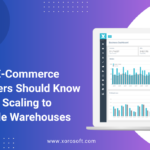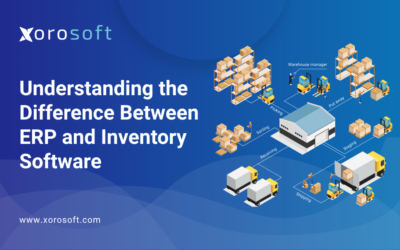
The Real Story Behind Fast but Flawed Shipping
For modern DTC and omnichannel brand leaders, success depends less on how fast you ship and more on how correctly you fulfill. When you master order accuracy in ecommerce fulfillment, you reduce costs, retain customers, and earn back valuable time to focus on brand growth.
Speed matters, of course. Yet when speed overshadows precision, operations spiral into rework, returns, and reputation damage. In contrast, an accurate fulfillment process delivers stability, trust, and scale — the foundation every founder and COO needs.
Why Order Accuracy in Ecommerce Fulfillment Drives Growth
As a founder or Head of Operations, your deeper goal is clear: spend 100% of your energy on growth. You want to refine your products, expand your channels, and build loyal communities. However, small fulfillment mistakes quietly drain that focus.
When incorrect items, wrong sizes, or mixed SKUs reach customers, the fallout spreads quickly. Your team scrambles to re-pick orders, handle support tickets, and manage reverse logistics. Instead of scaling your brand, you end up patching avoidable errors.
In the long run, order accuracy in ecommerce fulfillment becomes the difference between reactive chaos and proactive growth. Accuracy is what lets you plan with confidence — knowing each order strengthens your brand instead of eroding it.
Common Problems That Undermine Accuracy
Many leaders assume they have a speed problem. In reality, they have a visibility and consistency problem. Common hidden frictions often include:
-
Inventory counts that don’t match physical stock.
-
Repetitive picking errors caused by unclear labels or rushed workflows.
-
Untrained seasonal staff who follow inconsistent packing methods.
-
Manual data entry that breaks synchronization across channels.
-
Shipping targets that prioritize dispatch speed over correctness.
Each of these issues compounds over time. However, once you fix them, efficiency rises naturally — because your team stops wasting time on corrections.
Therefore, the smarter question isn’t “How do we ship faster?” but “How do we stop shipping wrong?”
How Accuracy Outperforms Delivery Speed
A package that arrives quickly but contains the wrong product still disappoints the customer. Moreover, it costs twice as much to fix.
When you commit to order accuracy in ecommerce fulfillment, the benefits compound:
-
Returns fall sharply because fewer customers receive the wrong product.
-
Support tickets drop, giving your team room for proactive service.
-
Inventory forecasting improves, since data reflects reality.
-
Customer trust grows as expectations are consistently met.
In contrast, pursuing speed without accuracy leads to expensive churn. It’s like sprinting in the wrong direction — impressive effort, wasted outcome.
Eventually, accuracy enables speed. Once your workflows run correctly every time, you can safely layer automation and faster shipping options without introducing chaos.
Key Metrics for Order Accuracy in Ecommerce Fulfillment
Leaders who track the right metrics rarely lose control. To strengthen order accuracy in ecommerce fulfillment, focus on the following measures:
1. Pick accuracy: The percentage of orders shipped exactly as requested.
2. Order cycle time: The duration from order placement to shipment.
3. Return rate due to fulfillment error: How often customers return items because of operational mistakes.
4. Cash conversion time: Days between order and payment receipt, accounting for corrections and refunds.
5. Support volume for order errors: The number of customer tickets related to incorrect or missing items.
These indicators tell a complete story. They reveal not only how fast you operate but also how reliably you deliver.
How a Brand Transformed Its Fulfillment Accuracy
Consider a mid-size DTC apparel brand selling both online and to boutique retailers. Six months ago, they struggled with rising returns and shrinking margins. Their pick accuracy sat around 93%, and nearly 5% of returns came from fulfillment errors.
Instead of chasing faster shipping, they focused on order accuracy in ecommerce fulfillment. They audited every step, trained their team, implemented barcode scanning, and synced all channels under one ERP system.
The results spoke for themselves. Pick accuracy rose to 98.7%, while fulfillment-related returns dropped below 1%. Customer complaints decreased by nearly 80%, and leadership regained more than 20 hours per week that had been lost to firefighting.
Their growth returned — not through speed, but through precision.
Practical Steps to Strengthen Order Accuracy in Ecommerce Fulfillment
Here’s a straightforward approach to embed accuracy into your fulfillment culture. Each step includes a goal, an action, and a measurable outcome.
1. Understand your current accuracy performance.
Begin with a 90-day audit. Count how many orders were shipped correctly versus total orders. Identify the most common mistakes and calculate their cost. Once you know your baseline, improvement becomes measurable.
2. Make accuracy a shared team objective.
Announce a clear target, such as achieving 98% pick accuracy. Discuss it at every weekly operations meeting. Public accountability aligns every role — from warehouse staff to customer support — around one simple standard.
3. Rebuild inventory visibility.
Check that digital stock numbers match what’s on your shelves. If mismatched, fix naming conventions and bin labeling. Because correct inventory is the root of correct orders, this step often delivers immediate impact.
4. Simplify picking and packing workflows.
Walk the floor and watch how orders move. Notice where errors occur. Standardize checklists, implement barcode scanning, and introduce a quick verification step before sealing any box. Each safeguard prevents costly repetition later.
5. Log every error and find root causes.
Instead of blaming individuals, collect data. Document what went wrong — wrong SKU, incorrect quantity, damaged item — and review these patterns weekly. You’ll quickly see where training or system changes are needed.
6. Sync systems across all channels.
For omnichannel brands, ensure your ERP or fulfillment platform integrates seamlessly with marketplaces and your Shopify store. Inconsistent data is often the invisible cause of mis-shipments.
7. Reinforce leadership focus on growth.
Once fulfillment runs smoothly, redirect saved time toward high-value activities. Use the regained capacity to launch new products, optimize marketing, or strengthen customer retention. Accuracy unlocks creativity.
A Five-Week Plan to Strengthen Ecommerce Fulfillment Accuracy
Here’s a simple timeline you can follow to start improving order accuracy in ecommerce fulfillment immediately:
Week 1: Announce the new focus on accuracy. Audit recent orders and identify the biggest error types.
Week 2: Conduct a physical inventory count for your top-selling products. Reconcile discrepancies and label bins clearly.
Week 3: Introduce a barcode or scanning system for high-volume SKUs. Train your team and track initial results.
Week 4: Review logged errors, analyze causes, and set an updated accuracy goal. Celebrate early wins to reinforce progress.
Week 5: Expand the improved processes to every product line and channel. Evaluate the time saved and reinvest it in growth initiatives.
Following this pattern for just one month often produces measurable results. Accuracy steadily rises, stress levels fall, and your team regains confidence in its systems.
Common Questions from Operations Leaders
How does focusing on accuracy affect delivery speed?
When accuracy improves, speed usually follows. You spend less time re-packing and reshipping, so the average fulfillment time decreases naturally.
Do customers notice slower delivery if accuracy becomes the main focus?
Most don’t. They care more about receiving exactly what they ordered. As your process stabilizes, you can safely add faster delivery options later.
Is it expensive to improve order accuracy?
Not necessarily. Many improvements involve process discipline, better training, and smarter layout — not just new software. However, integrating your fulfillment system or ERP with Shopify can deliver faster visibility and error prevention.
How often should we review accuracy metrics?
Weekly updates and monthly reviews work best. The goal is to make accuracy a normal part of your operational rhythm rather than an occasional project.
The Real Payoff of Accurate Fulfillment
Focusing on order accuracy in ecommerce fulfillment is not just about preventing errors. It’s about reclaiming time, reducing cost, and building a brand that customers trust.
When every order ships correctly, your entire business stabilizes. Teams operate calmly, customers stay loyal, and leadership gains space to think strategically. Moreover, profitability rises as waste and rework decline.
Therefore, instead of chasing ever-faster delivery, pursue flawless fulfillment. The rewards will follow automatically.
Invest in Accuracy — Then Add Speed
When you commit to order accuracy in ecommerce fulfillment, you don’t sacrifice speed — you enable it. Correct, consistent processes are the foundation for scalable automation and faster growth.
If you’re ready to see how better fulfillment accuracy can transform your brand, book a demo today.
And if you’d like to compare solutions, check G2’s top-rated ERP systems or the Xorosoft ERP Shopify App for seamless integration with your ecommerce store.
By choosing accuracy first, you’ll free your operations from chaos, boost profitability, and gain the peace of mind to focus entirely on growth.
Search
Categories
- ACCOUNTING & FINANCIALS 58
- Business 1
- E-COMMERCE & CHANNEL INTEGRATIONS 67
- ECommerce 3
- ERP 795
- FINANCE & ACCOUNTING 9
- INVENTORY & OPERATIONS 11
- Inventory Management Software 1
- OPERATIONS & INVENTORY 58
- PROCUREMENT & SUPPLY CHAIN 9
- PURCHASING & SUPPLY CHAIN 58
- Software 1
- WAREHOUSE & FULFILLMENT WMS 60
- WMS & FULFILLMENT 12
Recent Posts
-
 Why Order Accuracy Is More Important Than Delivery Speed
Why Order Accuracy Is More Important Than Delivery Speed -
 How to Choose the Right ERP for a Growing DTC Brand
How to Choose the Right ERP for a Growing DTC Brand -
 What E-Commerce Founders Should Know Before Scaling to Multiple Warehouses
What E-Commerce Founders Should Know Before Scaling to Multiple Warehouses -
 The Data You’re Ignoring That’s Costing You Thousands Each Month
The Data You’re Ignoring That’s Costing You Thousands Each Month -
 How Modern ERPs Are Transforming the Supply Chain for SMBs
How Modern ERPs Are Transforming the Supply Chain for SMBs




